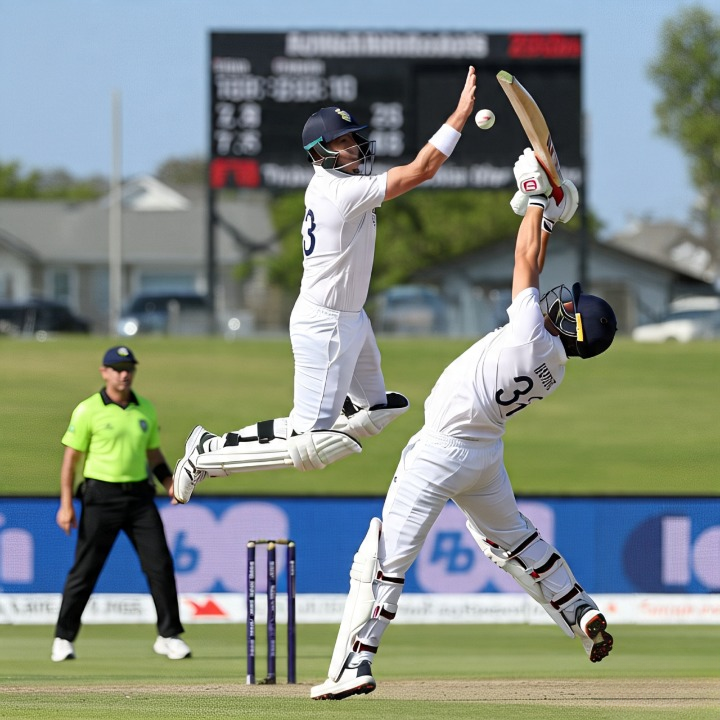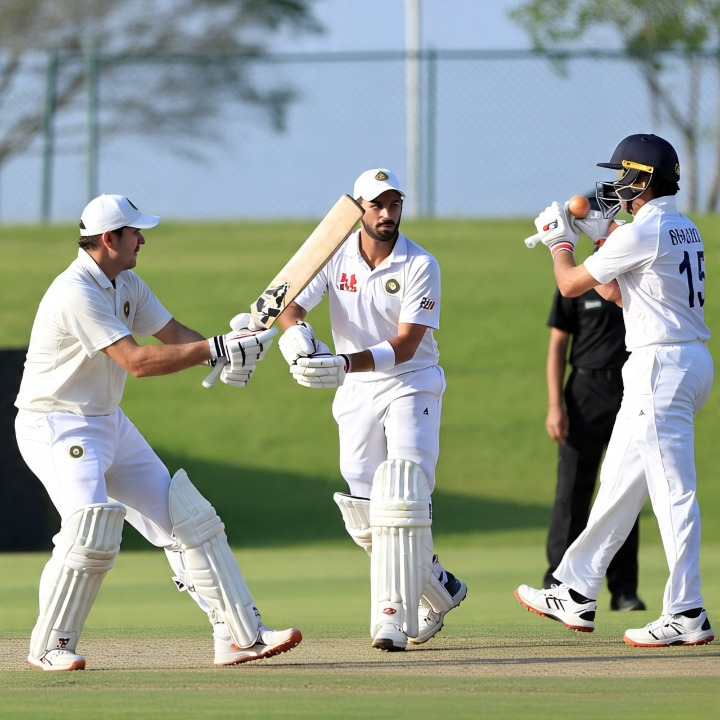The Rules for Boundary Catches in Cricket have become one of the most fascinating—and often controversial—elements in the modern game. Whether you’re a player, coach, or die-hard fan, you’ve likely held your breath during those edge-of-the-seat moments when a fielder takes a stunning catch right at the boundary line. But what really makes a boundary catch valid? And how well do we understand the mechanics and official guidelines that govern such spectacular dismissals?
In this detailed blog post, we’ll break down The Rules for Boundary Catches in Cricket, exploring not just the written law but the spirit behind it, its evolution, and how players can stay compliant while still pulling off jaw-dropping plays. Buckle up—because every inch matters when it comes to the rope.
Understanding the Basics: The Rules for Boundary Catches in Cricket
Before diving deep, let’s get the fundamentals straight. The Rules for Boundary Catches in Cricket are specifically designed to ensure fairness and maintain the integrity of the game, especially during close-call moments.
Here’s what they generally state:
- The fielder must be grounded entirely within the field of play when making the first contact with the ball.
- If airborne, their last point of ground contact must be within the boundary.
- The fielder must not be touching the boundary line, advertising cushions, or any object beyond the boundary when catching the ball.
- The catch must be completed in a controlled manner, ensuring the ball doesn’t touch the ground.
These rules might sound straightforward, but the real challenge lies in execution—especially during high-speed, real-time action.
Why The Rules for Boundary Catches in Cricket Matter So Much
Why all the fuss over where a fielder’s toe is at the time of a catch?
Because in close games, these moments can define the outcome. A legal boundary catch can send a set batter packing, swing the momentum, and even determine championship results. That’s why The Rules for Boundary Catches in Cricket carry such weight—they aren’t just technicalities, they’re game-changers.
A Brief History of the Rules for Boundary Catches in Cricket
Interestingly, The Rules for Boundary Catches in Cricket weren’t always as detailed as they are today. In the early days of the game, players only had to stay within the field while catching the ball—there were no slow-motion replays, no third umpires, and definitely no high-definition zooms.
However, with advancements in technology and increased scrutiny, the International Cricket Council (ICC) refined these rules. Today, the ICC playing conditions ensure that the rules are standardized across all formats: Test, ODI, and T20.
Key Terms You Should Know Around The Rules for Boundary Catches in Cricket
Understanding The Rules for Boundary Catches in Cricket also means getting familiar with some cricket-specific jargon. Here are a few terms that come up often:
- Field of Play – The area within the boundary line where legal fielding can occur.
- Boundary Line – The rope or painted line marking the outer edge of the field.
- Controlled Catch – The fielder must demonstrate clear control of the ball and their body.
These terms play a critical role in interpreting whether a boundary catch is legal or not.
Game Scenarios Where The Rules for Boundary Catches in Cricket Get Tricky
Real-life cricket doesn’t always follow textbook examples. Let’s take a look at scenarios that test the limits of the law.
1. The Airborne Relay Catch
Imagine two fielders coordinating a mid-air pass to complete a catch without either touching the boundary. Sounds cinematic? It’s legal—as long as they adhere to The Rules for Boundary Catches in Cricket.
2. The One-Foot-Off-the-Ground Rule
What if a fielder jumps from inside the field, catches the ball mid-air, and lands outside the rope? That’s illegal. According to The Rules for Boundary Catches in Cricket, the fielder must not touch any part of the ground beyond the boundary during the process.
3. Contact with Objects Beyond the Boundary
If the fielder makes contact with a boundary cushion or an advertising board during the catch, the batter is safe. Again, The Rules for Boundary Catches in Cricket are clear on this.
Role of Technology in Enforcing The Rules for Boundary Catches in Cricket
Modern cricket owes a lot to technology. High-definition cameras, frame-by-frame replays, and third umpires have made it easier to judge tight boundary catch calls. The Decision Review System (DRS) has taken center stage in recent years, ensuring The Rules for Boundary Catches in Cricket are enforced with precision.
But technology is not flawless. Sometimes, footage is inconclusive, and umpires are forced to stick with the on-field call. Even then, the rules provide a consistent framework that supports fair judgment.
Differences Across Formats: Are The Rules for Boundary Catches in Cricket Always the Same?
The essence of The Rules for Boundary Catches in Cricket remains consistent across formats, but their application may differ slightly depending on match situations.
- In Test cricket, the rules tend to be more strictly enforced due to the longer format and more scrutiny.
- In ODIs and T20s, where games move quickly and split-second decisions matter, technology plays a larger role in reviewing controversial catches.
Despite the pace and pressure, the rulebook doesn’t change—and players must adapt accordingly.

Controversies and Iconic Moments That Shaped The Rules for Boundary Catches in Cricket
Cricket history is filled with moments where boundary catches created chaos or delivered jaw-dropping brilliance. Let’s revisit a few:
- Trent Boult’s near-miss in the World Cup Final: His foot grazing the boundary robbed his team of a crucial wicket.
- Nicholas Pooran’s airborne magic: A picture-perfect example of how to apply The Rules for Boundary Catches in Cricket with athletic genius.
- MS Dhoni’s third-umpire challenge: Proving how even legends rely on the technical nuances of the rule.
These moments highlight why understanding The Rules for Boundary Catches in Cricket is not just important—it’s essential.
Tips for Mastering The Rules for Boundary Catches in Cricket
Whether you’re an aspiring player or an enthusiastic coach, here are a few practical tips to stay on the right side of the law:
- Practice Boundary Awareness
Train yourself to be aware of your position relative to the rope at all times. - Master Airborne Control
Knowing how to launch and land safely without stepping over the line is key. - Watch Replays and Learn
Study international games to see how pros navigate tight situations while respecting The Rules for Boundary Catches in Cricket. - Work on Communication
Relay catches require coordination—practicing with your teammates helps eliminate mistakes. - Stay Updated on Law Changes
The ICC playing conditions evolve, so make sure you’re not playing by outdated rules.
Conclusion: Why The Rules for Boundary Catches in Cricket Are Crucial
In cricket, the smallest of margins can make the biggest difference. A well-executed boundary catch is more than just a moment of brilliance—it’s a calculated move governed by laws that preserve game integrity and competitive fairness. By understanding and respecting The Rules for Boundary Catches in Cricket, players can avoid costly errors and maximize their impact on the field.
So the next time you witness a fielder soaring near the boundary, you’ll appreciate not just the athleticism, but the discipline and rule-awareness behind the catch. Because in cricket, it’s not just about catching the ball—it’s about catching it right.


